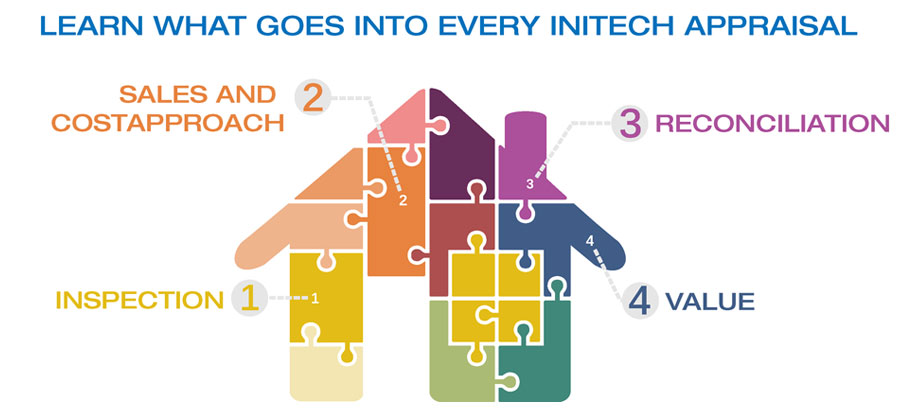Initech Appraisals is a full-service provider of residential property valuation products ranging from specialized consulting services to appraisal reports for lending or market analysis. Our reports and services are tailored to meet client-specific requirements which range from lending, construction, buying/selling and estate planning. For a full list of services please see below or contact our team directly.
Initech Appraisal Services

RESIDENTIAL APPRAISAL SERVICES

Service Areas: Houston • Austin • San Antonio • Dallas/Ft. Worth | View Texas Coverage Map
The Appraisal Process

What is an appraisal?
A real estate appraisal is an opinion of market value as of a specified date which is performed by a certified or licensed appraiser.
The Inspection
So what goes into a real estate appraisal? It all starts with the inspection. An appraiser’s duty is to inspect the property being appraised to ascertain the true status of that property. He or she must actually see features, such as the number of bedrooms, bathrooms, the location, and so on, to ensure that they really exist and are in the condition a reasonable buyer would expect them to be. The inspection often includes a sketch of the property, ensuring the proper square footage and conveying the layout of the property. Most importantly, the appraiser looks for any obvious features – or defects – that would affect the value of the house.
Once the site has been inspected, an appraiser uses two or three approaches to determining the value of real property: a cost approach, a sales comparison and, in the case of a rental property, an income approach. It is important to remember that the appraiser is not a home inspector.
Cost Approach
The cost approach is the easiest to understand. The appraiser uses information on local building costs, labor rates and other factors to determine how much it would cost to construct a property similar to the one being appraised. This value often sets the upper limit on what a property would sell for. Why would you pay more for an existing property if you could spend less and build a brand new home instead? While there may be mitigating factors, such as location and amenities, these are usually not reflected in the cost approach.
Sales Comparison
The most commonly used approach in a residential appraisal is the sales comparison approach. Appraisers will work in areas they are competent in. They understand the value of certain features to the residents of that area. They know the traffic patterns, the school zones, the busy throughways; and they use this information to determine which attributes of a property will make a difference in the value. Then, the appraiser researches recent sales in the vicinity and finds properties which are ”comparable” to the subject being appraised. The sales prices of these properties are used as a basis to begin the sales comparison approach.
Using knowledge of the value of certain items such as square footage, extra bathrooms, hardwood floors, fireplaces or view lots (just to name a few), the appraiser adjusts the comparable properties to more accurately portray the subject property. For example, if the comparable property has a fireplace and the subject does not, the appraiser may deduct the value of a fireplace from the sales price of the comparable home. If the subject property has an extra half-bathroom and the comparable does not, the appraiser might add a certain amount to the comparable property.
In the case of income producing properties – rental houses for example – the appraiser may also use a third approach called the cost approach to support value to the property. In this case, the amount of income the property produces is used to arrive at the current value of those revenues over the foreseeable future.
Reconciliation
Combining information from all approaches, the appraiser is then ready to stipulate an opinion of market value for the subject property. It is important to note that the appraisal is the best indication of market value based on historical data of closed sales. It may not always be the final sales price. There are always mitigating factors such as seller motivation, urgency or ”bidding wars” that may adjust the final price up or down.
